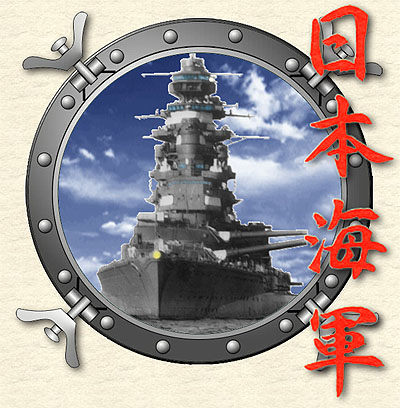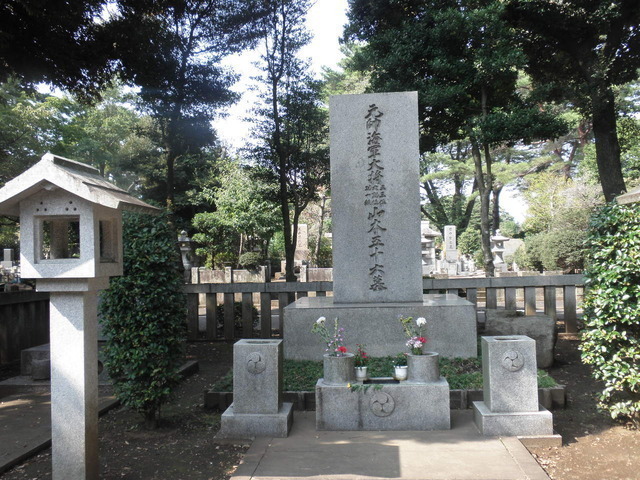How to install the app on iOS
Follow along with the video below to see how to install our site as a web app on your home screen.
Note: This feature may not be available in some browsers.
You are using an out of date browser. It may not display this or other websites correctly.
You should upgrade or use an alternative browser.
You should upgrade or use an alternative browser.
Imperial Japanese Navy [NIHON KAIGUN]
- Thread starter Aepsilons
- Start date
that japs emperor during wwii is one of the biggest war criminals and that fxxking bastard should be hanged or burned to ashes like hitler.
as for yamamoto isoroku, if there was any parts left after being shot down, those were already fish food then.
as for yamamoto isoroku, if there was any parts left after being shot down, those were already fish food then.
IMPERIAL JAPANESE NAVY - TRIBUTE
NIHON KAIGUN

I am dedicating this thread to the information as well as pictures of the naval vessels of the Imperial Japanese Navy. I will also be placing historical naval battles associated with the Imperial Navy and Allied Forces here.
Please, keep this thread only on subject matter. I want to keep the content of this thread purely didactic and historical information related to the IJN.
天皇陛下万歳!!
[Tenno heika banzai]
At the beginning of the Second World War, the Japanese Navy (or, in the Japanese language, Nihon Kaigun, or even Teikoku Kaigun, the Imperial Navy) was arguably the most powerful navy in the world. Its naval aviation corps, consisting of 10 aircraft carriers and 1500 topnotch aviators, was the most highly trained and proficient force of its kind. Its 11 (soon to be 12) battleships were among the most powerful in the world. And its surface forces, armed with the superb 24" Type 93 (Long Lance) torpedo, were incomparable night fighters.
This page is devoted to the proud navy that lost the Pacific War.
Mr Second Back
FULL MEMBER

- Joined
- Apr 23, 2014
- Messages
- 122
- Reaction score
- 0
- Country
- Location
It means "Navy".Does KAI-GUN mean sea-gun?
Mr Second Back
FULL MEMBER

- Joined
- Apr 23, 2014
- Messages
- 122
- Reaction score
- 0
- Country
- Location
Cannot see Pictures, but if having some navy knowledge, he or she will know those warships are really nice!
Ra'ad
FULL MEMBER

- Joined
- Aug 26, 2007
- Messages
- 433
- Reaction score
- 3
- Country
- Location
You say you want a thread that is historical in nature, but you make neo-nationalistic comments at the same time. I would separate the two if you want quality contributions, since glamorizing a brutal imperialistic war machine may stir emotions.
I don't think it would stir any such emotions since the thread is purely about historical information. And as far as judging their war machine or their tactics is concerned, the US trumps everyone. So lets leave this thread to purely informational discussions. No opinions or criticism.
Tshering22
ELITE MEMBER

- Joined
- Jul 19, 2010
- Messages
- 18,431
- Reaction score
- 4
- Country
- Location
Owing to this legacy, Japan must reinvent their current self defence navy and induct aircraft carriers. They should focus on making ShinShin into a naval stealth fighter and consider getting aircraft carriers.
Does KAI-GUN mean sea-gun?
Nihon Kaigun is the shortened version of Nihon Teikoku Kaigun written as 日本海軍, and literally means : Navy of the Great Japanese Empire.
I don't think it would stir any such emotions since the thread is purely about historical information. And as far as judging their war machine or their tactics is concerned, the US trumps everyone. So lets leave this thread to purely informational discussions. No opinions or criticism.
Yes, this thread is for purely historical and serves as a didactic platform.
Hamartia Antidote
ELITE MEMBER

- Joined
- Nov 17, 2013
- Messages
- 35,188
- Reaction score
- 30
- Country
- Location
as for yamamoto isoroku, if there was any parts left after being shot down, those were already fish food then.
His plane crashed on an island. I believe it is still there.
Owing to this legacy, Japan must reinvent their current self defence navy and induct aircraft carriers.
They have some experience building them
http://en.wikipedia.org/wiki/Hyūga-class_helicopter_destroyer
Izumo-class helicopter destroyer - Wikipedia, the free encyclopedia
Aircraft Carriers of the Imperial Japanese Navy
The Japanese Navy was a pioneer in naval aviation, having commisioned the world's first built-from-the-keel-up carrier, the Hosho. Throughout the 1920's and 1930's, they constantly experimented with their carriers, perfecting their design and construction methods, and honing the demanding art of blue-water power projection. They also put in place a tremendously selective and rigorous pilot training program. As a result, by the time Japan attacked the United States, they possessed a fantastically effective naval aviation force, comprised of a core of six large carriers and several more light carriers, whose airwings were manned by long-serving, highly-skilled pilots. For the first six months of the war, this force would roam the Pacific with near impunity, destroying their opponents almost at will. And even well after the debacle at Midway, Japanese carriers and their airwings retained a formaidable punch.
UNRYU CLASS


Displacement: 22,534 tonnes
Dimensons: 745'11" x 72'2" x 25'9"
Speed: 35 knots
Armament: 65 aircraft, 5" 40 caliber guns, 89 25mm/60 guns
Crew: 1600
The Japanese Navy was a pioneer in naval aviation, having commisioned the world's first built-from-the-keel-up carrier, the Hosho. Throughout the 1920's and 1930's, they constantly experimented with their carriers, perfecting their design and construction methods, and honing the demanding art of blue-water power projection. They also put in place a tremendously selective and rigorous pilot training program. As a result, by the time Japan attacked the United States, they possessed a fantastically effective naval aviation force, comprised of a core of six large carriers and several more light carriers, whose airwings were manned by long-serving, highly-skilled pilots. For the first six months of the war, this force would roam the Pacific with near impunity, destroying their opponents almost at will. And even well after the debacle at Midway, Japanese carriers and their airwings retained a formaidable punch.
UNRYU CLASS


Displacement: 22,534 tonnes
Dimensons: 745'11" x 72'2" x 25'9"
Speed: 35 knots
Armament: 65 aircraft, 5" 40 caliber guns, 89 25mm/60 guns
Crew: 1600
Hamartia Antidote
ELITE MEMBER

- Joined
- Nov 17, 2013
- Messages
- 35,188
- Reaction score
- 30
- Country
- Location
Thanks for the link, @Peter C . He is a revered military strategist in Japan to this day, as well as revered even in many international naval colleges. I would like to say that after his death, Yamamoto Isoroku was given a state funeral. He rests in Japan.

Taiyo Class


Displacement: 20,000 tonnes
Speed: 25 knots
Armament: multiple guns, 27 aircraft, depth charges
Crew: 800
Shinano Class
Laid down as the third Yamato-class battleship, it was decided to complete her as a carrier after the ugly events at Midway. Given her size (72,000 tons full load - damn near the size of a 1950's -vintage U.S. Forrestal-class supercarrier) she would have carried a pretty minimal number of planes, some 45-55. Because of her prodigious bunkerage and ordnance stowage space, it was intended that she operate as both a carrier and a replenishment vessel.


Displacement: 71, 890 tonnes
Speed: 30 knots
Armament: multiple aa guns, depthcharges, rockets, 60 planes
Crew: 2400


Displacement: 20,000 tonnes
Speed: 25 knots
Armament: multiple guns, 27 aircraft, depth charges
Crew: 800
Shinano Class
Laid down as the third Yamato-class battleship, it was decided to complete her as a carrier after the ugly events at Midway. Given her size (72,000 tons full load - damn near the size of a 1950's -vintage U.S. Forrestal-class supercarrier) she would have carried a pretty minimal number of planes, some 45-55. Because of her prodigious bunkerage and ordnance stowage space, it was intended that she operate as both a carrier and a replenishment vessel.


Displacement: 71, 890 tonnes
Speed: 30 knots
Armament: multiple aa guns, depthcharges, rockets, 60 planes
Crew: 2400



Isoroku Yamamoto,
Admiral of the Combined Imperial Japanese Fleet


Yamamoto Isoroku, perhaps Japan's greatest strategist and the officer who would contrive the surprise air attack on U.S. naval forces at Pearl Harbor, is born on this day in 1884.
A graduate of the Japanese naval academy in 1904, Yamamoto worked as a naval attaché for the Japanese embassy in Washington DC from 1926 to 1927. During the next 15 years, he saw several promotions, from vice minister of the Japanese navy to commander in chief of Japan's Combined Fleet in August 1941. Despite worsening Japanese-American relations (especially in light of Japan's alliance with Germany and Italy), Yamamoto initially opposed war with the U.S., mostly out of fear that a prolonged conflict would go badly for Japan. But once the government of Prime Minister Tojo Hideki decided on war, Yamamoto argued that only a surprise attack aimed at crippling U.S. naval forces in the Pacific had any hope of victory. He also predicted that if war with America lasted more than one year, Japan would lose.
Yamamoto meticulously planned and carried out the Japanese air strike on the U.S. naval base at Pearl Harbor on Oahu Island, Hawaii, December 7, 1941. Waves of dive bombers, torpedo planes, and fighters descended on U.S. battleships, capsizing, destroying, or immobilizing several U.S. battleships within the first 30 minutes of the raid. The attack was a decided success, especially in catching the United States off guard, and resulted in the destruction of 180 U.S. aircraft and more than 3,400 American casualties.
U.S. forces finally caught up with Yamamoto, though, when they ambushed his plane and shot him down over Bougainville Island in 1943. Yamamoto died having been right about two things: the effectiveness of aircraft carriers in long-range naval attacks and that Japan would lose a drawn-out struggle with the United States.
So the greatest jap strategist lost the war. He knew japan would lose in an all out war with US, yet he planned the Pearl Harbour attack to get the US involved in ww2. japan's greatest strategist alright.
Taiho Class
The most beautiful Aircraft Carrier the Japanese built during the war, and a distinct departure design-wise, being the first Japanese carrier to incorporate a closed hurricane bow (a la contemporary British carriers).


Displacement: 36,000 tonnes
Speed: 34 knots
Armament: 60 aircraft, multiple guns, rockets, depth charges
Crew: 1751
Hiyo Class

Displacement: 27,000 tonnes
Speed: 25 knots
Armament: 53 aircraft, multiple aa guns, depth charges, rockets
Crew: 1224
The most beautiful Aircraft Carrier the Japanese built during the war, and a distinct departure design-wise, being the first Japanese carrier to incorporate a closed hurricane bow (a la contemporary British carriers).


Displacement: 36,000 tonnes
Speed: 34 knots
Armament: 60 aircraft, multiple guns, rockets, depth charges
Crew: 1751
Hiyo Class

Displacement: 27,000 tonnes
Speed: 25 knots
Armament: 53 aircraft, multiple aa guns, depth charges, rockets
Crew: 1224
Similar threads
- Replies
- 8
- Views
- 158
- Replies
- 6
- Views
- 922
- Replies
- 6
- Views
- 783



